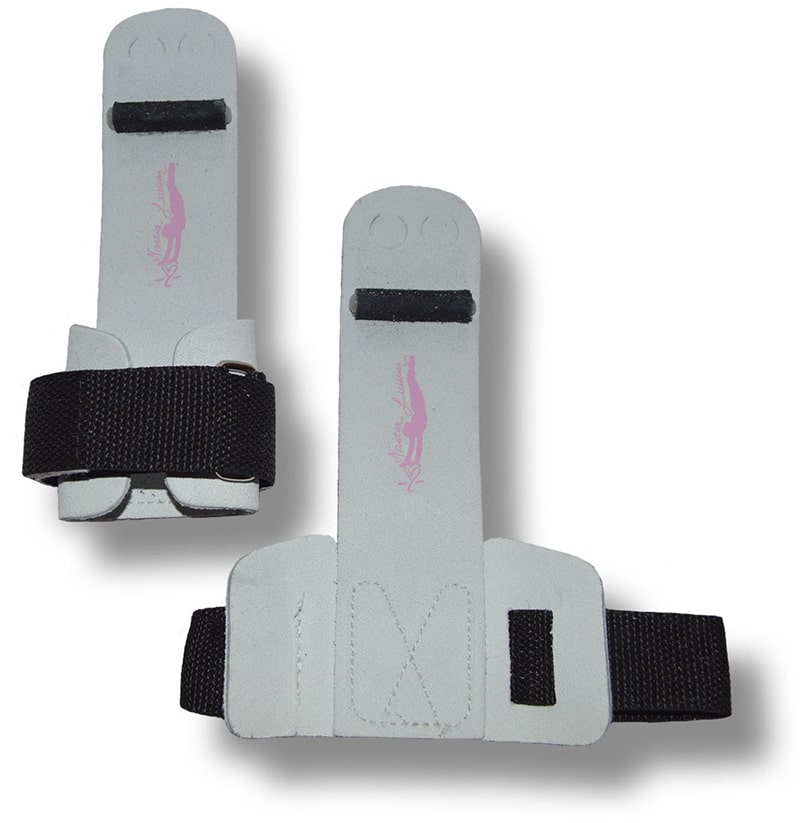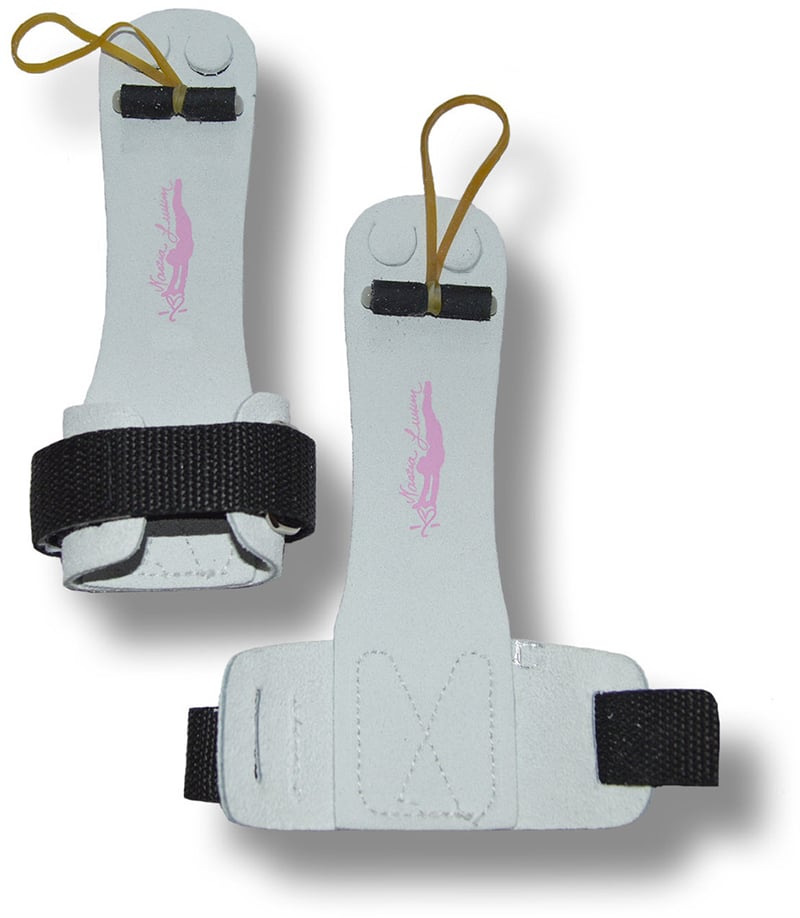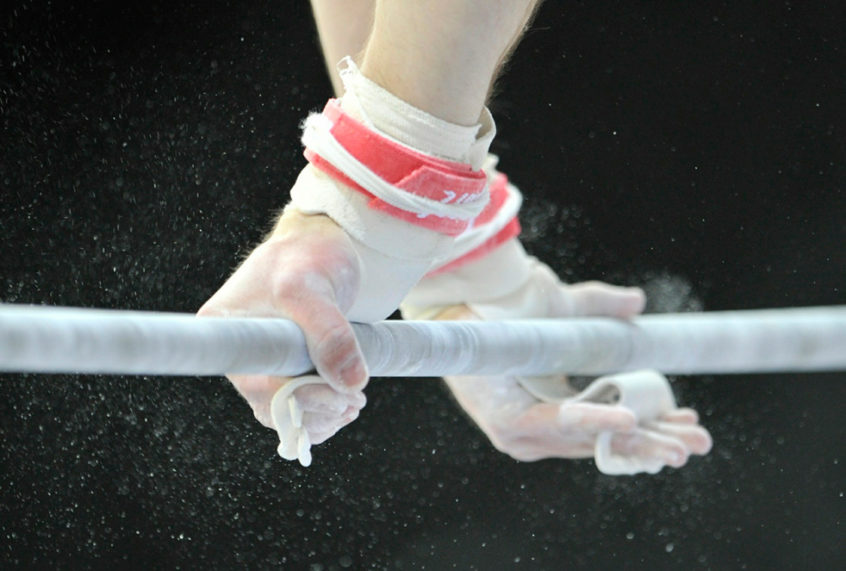So as a gymnast you are getting everything you need to be the best gymnast you can be, but OH NO! You forgot something that is actually important…Grips!
What are Gymnastics Grips?
A gymnast will typically wear grips while working with uneven bars (female) and on the high Bar and Still Rings (male).
Gymnasts will wear their grips on their hands. Like its name, it literally helps gymnasts to have a better grip on the bars, making it easier for your gymnast to practice or perform without tearing apart their hands (grips help minimize tears, rips, blisters, and callouses).
Does a Gymnast Need Grips?
You might have heard that some professional gymnasts don’t use grips. The fact is, it’s true, some of them (especially foreign athletes) don’t actually wear grips. After a period of multiple tears and rips, their palms get calloused and toughened.
However, in the USA especially, many professional gymnasts wear grips, it is recommended by many experts and it is easily available.
So I definitely recommend gymnastics grips whether you are a beginner or not, especially if you are serious about gymnastics and want to compete at a competitive level. It’s actually best to start using grips sooner, so you get used to the feeling of wearing them and don’t have to relearn all the moves.
Not only grips protect palms from tears and rips, they also give you better grips on many moves that will improve your performance, therefore, it is definitely a beneficial investment.
Some gymnasts who do not use grips will use other products such as gauze or tape, but sometimes those products do not always hold up well. If you are concerned whether your gymnast needs (or does not need) grips, it is best to speak about it with their coaches for a better idea.
What are the Different Types of Grips for Males?
Three-Finger Holes
If your gymnast is a male, he will be using his three-finger grips on the high bar. These grips include a small dowel (small rod) that will help him balance properly as well as protect his hands.
Two-Finger Holes
Your gymnast will use two-finger grips when he is practicing or performing on the still rings and parallel bars. The only difference is that the grips that he will use on the still rings have a larger dowel than the ones he would use on the parallel bars. The grips he will use for the parallel bars have a small dowel.
What are the Different Types of Gymnastics Grips for Female Gymnasts?
Now-dowel Grips
These grips are used by gymnasts who are just beginning. Of course when you are first starting out, your gymnast is not going to be swinging all over the place and jumping from the low bar to the high bar.
Non-dowel grips do not include the rod, therefore these should be used to start your gymnast off so she can basically get used to them and the way they feel. Many parents buy them for their gymnast just to prevent blistering while just beginning.

Here are our favourites options for beginner grips:
Dowel Grips
These grips are used by gymnasts who are more advanced and compete (competitive gymnasts). Dowel grips include a rod near the fingers so your gymnast can get a better feel on the bars, making it easy for her to be able to swing around. The grips also include two-finger holes for your gymnast to place her ring and middle fingers.
Non-dowel grips do not include the rod, therefore these should be used to start your gymnast off so she can basically get used to them and the way they feel. Many parents buy them for their gymnast just to prevent blistering while just beginning.
Different shapes of dowel grips:
- Straight Grips
- Skinny Grips
- Curved Grip
For a long time, gymnasts have been divided on the best type of grip to use when performing on the bars. The two main types of grips are straight grips and skinny grips. Each has its own advantages and disadvantages.
Straight grips provide more stability and are better for performing skills that require a lot of hand movement, such as swings and casts.

Skinny grips, on the other hand, provide more grip strength and are better for skills that require a firm grip, such as releases and transitions.
A curved grip combines the best of the two (straight and skinny grips). The shape of the grip allows gymnasts to maintain a strong hold on the bar, even when their hands are sweaty.
In addition, the curve helps to distribute the pressure evenly across the palm, reducing the risk of calluses and blisters. The curved grip also provides a natural resting place for the thumb, which helps to prevent fatigue during long routines.
For these reasons, many gymnasts prefer a curved grip when training and competing.

Ultimately, the best type of grip to use depends on the individual gymnast and the move being performed. Experiment with both types of grips to see what works best for you.
Here are our top choices for each type of dowel grips:
- Straight Grips: Nastia Liukin Russian Heritage
- Skinny Grips: Nastia Luikin Big Swinger
- Curved Grips: Nastia Liukin Champions
What Size of Grips do I get for my Gymnast?
So, grips come in different sizes (obviously, duh!) and it is best to pay close attention to the sizing charts on the websites and it is important you measure your gymnast’s hand right.
Failure to measure correctly can cause injury to your gymnast, and we DO NOT want that to happen. Grips come in sizes of 0-3 and like everything else, each brand may fit differently.
How to Take a Good Care of Gymnastics Grips
When it comes to breaking in grips, it is important to break them in slowly. You do not want to just go ahead and do the craziest skill on bars the first time you put them on. It is important to start off slow, and have your gymnast just do basic skills until the grips start to feel less stiff.
Not all grips take a long time to break in, the brand and type of grips you purchase will determine how long it takes for them to feel good on your gymnast’s hands.
Many companies recommend storing grips into a separate bag, away from everything else. Not only will this prevent chalk getting everywhere, but it also will keep them in good shape so they are not being thrown at the bottom of the gym bag getting squished or scuffed up.
Some sources mentioned that many gymnasts use a grip brush. A grip brush will brush away chalk residue so it does not keep building up after each use (too much residue can damage the grips and make them won’t last as long).
A grip brush also will make the surface of your gymnast’s grips more tough because you do not want the grips to be too smooth otherwise your gymnast will be sliding left and right on the bars.
Please feel free to comment (or to give advice) because we would love to help those who are looking to buy grips for their gymnast!


2 Comments on “Gymnastics Grips Buying Guide: Choosing the Best Grips for Your Needs”
Pingback: 12 Tips for New Team Parents – Extreme Gymnastics USA
Pingback: Gymnastics Grip: How to Tape your Hands Properly - Healit